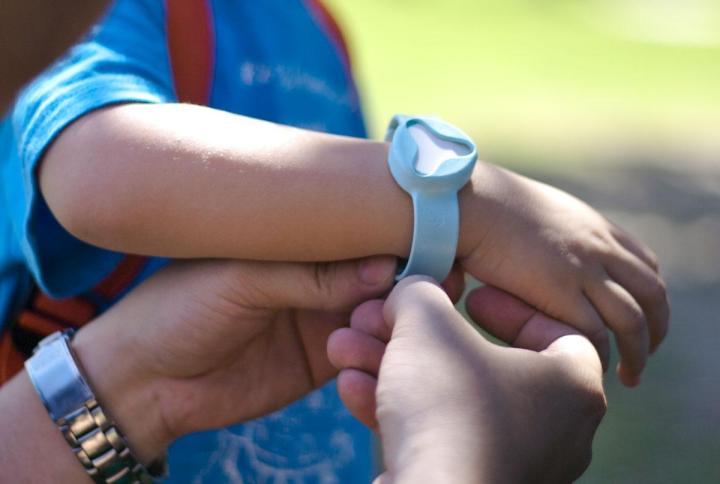
Detailed extensively on Beluvv’s product page, the Guardian is a small, Bluetooth-enabled tracking device that’s designed to be worn by a child as a bracelet or necklace. When combined with a mobile application, the radio chip within the BeLuvv Guardian constantly communicates with the parent’s mobile device and can send an alert when the child has traveled too far away. Parents can set a specific range from 0 to 230 feet and will be alerted when the child breaches the maximum range of the tracking system.

Acting as an automated Amber Alert of sorts, the “global guardian network” allows organization among parents on a much wider scale. Of course, unscrupulous people simply can’t use the app to locate children wearing the Guardian tag. The application only notifies the members of the parent’s private network of the child’s location in relation to another user with the Guardian app.
The mobile application displays a geographical map of the area in order to pinpoint a child’s location at any time. In addition, parents can setup the previously mnetioned private network adding other parents, relatives and other trusted friends. The app also includes Facebook integration, thus it’s as simple as adding a Facebook friend to the private network. This type of device could be particularly useful at playgrounds among groups of parents, especially when kids are running around endlessly. The device is also waterproof, thus it should hold up in the rain or when a child is swimming.
Depending on the time spent in use, the BeLuvv Guardian’s battery life has a range of about four to twelve months and the battery is easily replaceable. Regarding compatibility, the Guardian is currently limited to iOS devices, specifically the iPhone 4S and higher, iPad Mini and the iPad 3rd generation and higher. According to the developers, they expect to expand out to the Android, Windows Phone and Blackberry platforms next. Due to large market share, it’s likely that the Android platform has top development priority.

Detailed within a study by the International Centre for Missing and Exploited Children, approximately eight million children go missing each year. Based off that fact, the founders of BeLuvv have pledged to give away one Guardian device to a low-income, needy family for every two devices that are purchased. This also benefits BeLuvv, since a larger network of users provides more opportunity for alerts when a child goes missing.
The BeLuvv Guardian comes with a light blue rubber buckle and wristband as accessories. It’s currently available for preorder at a price point of $24.95 and is expected to ship on November 30, 2013. After November, the expected retail price of the device will be $29.95. There are discounts in place for ordering multiple tags, perhaps ideal for large families with several children.


